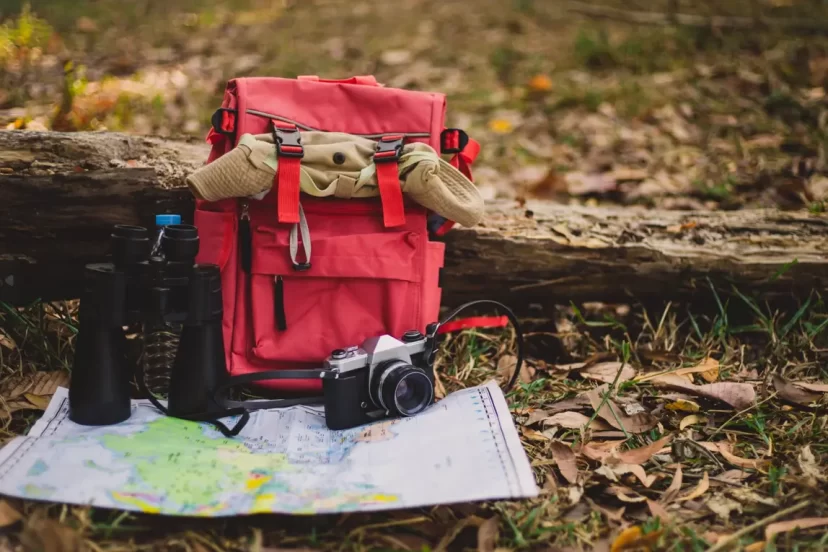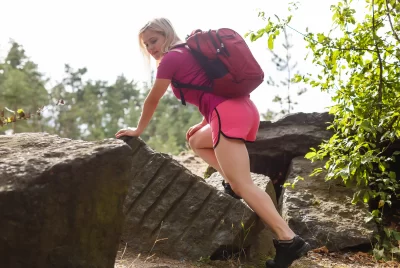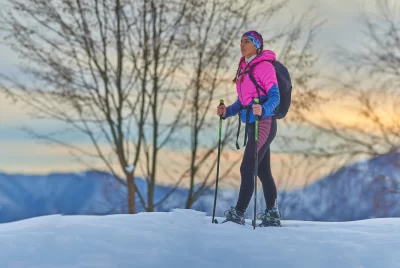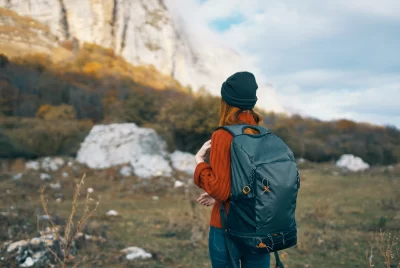Hiking Gear Guide: Must-Have Essentials for Every Hiker
Whether you’re a beginner or a seasoned trekker, having the proper hiking gear can make a world of difference in terms of comfort, safety, and overall enjoyment of your outdoor adventures. In this comprehensive hiking gear guide, I’ll walk you through the must-have essentials for every hiker. From sturdy footwear to reliable navigation tools, we’ll cover everything you need to ensure a successful and memorable hiking experience.
Choosing the Right Footwear
Hiking Boots vs. Trail Shoes: Finding Your Perfect Fit
When it comes to hiking footwear, there are two primary options: hiking boots and trail shoes. Hiking boots provide excellent ankle support and are ideal for rugged terrains and longer hikes. On the other hand, trail shoes offer a lighter and more flexible alternative, perfect for shorter hikes or well-maintained trails. The choice between hiking boots and trail shoes depends on your hiking preferences and the terrain you plan to tackle.
Importance of Proper Footwear for Hiking Safety and Comfort
Investing in high-quality footwear is crucial for your hiking adventures. Ill-fitting or inadequate footwear can lead to discomfort, blisters, and even injuries on the trail. Proper hiking shoes or boots provide excellent traction, stability, and protection for your feet. They also offer support for your ankles, reducing the risk of sprains. Don’t compromise on the quality of your hiking footwear; your feet will thank you!
Layering: Dressing for Success
The Base Layer: Regulating Body Temperature
When it comes to dressing for hiking, layering is key. The base layer, worn next to your skin, helps regulate your body temperature by wicking away sweat and moisture. Opt for lightweight, moisture-wicking fabrics such as merino wool or synthetic materials. These materials will keep you dry and comfortable, even during strenuous hikes.
Insulating Layers: Staying Warm in Chilly Conditions
Insulating layers provide warmth by trapping heat close to your body. Fleece jackets, down vests, and synthetic insulated jackets are excellent options for insulation. Depending on the weather, you can adjust the number of insulating layers to maintain the right level of warmth.
Outer Shell: Protection Against the Elements
The outer shell layer serves as your defense against wind, rain, and snow. Look for waterproof and breathable jackets and pants made from durable materials such as Gore-Tex. These outer layers will keep you dry while allowing moisture to escape, preventing you from feeling clammy or sweaty.
Backpacks: Carrying Your Essentials
Selecting the Right Backpack Size
Choosing the right backpack size depends on the duration of your hikes and the amount of gear you plan to carry. For day hikes, a smaller backpack with a capacity of 20-30 liters should be sufficient. Multi-day hikes may require larger backpacks ranging from 40-70 liters or more.
Features to Consider When Choosing a Hiking Backpack
When selecting a hiking backpack, consider features such as padded shoulder straps, hip belts for weight distribution, adjustable torso length, and multiple compartments for organization. It’s also essential to ensure a proper fit and test the backpack’s comfort by adjusting the straps before hitting the trail.
Navigating with Confidence
Maps and Compass: Traditional Navigation Tools
Carrying a detailed topographic map and a reliable compass is crucial for navigating unfamiliar trails. Learn how to read maps and use a compass effectively to determine your location and plan your route. These traditional navigation tools are reliable even when electronic devices fail.
GPS Devices: Modern Technology for Trail Guidance
GPS devices have become popular among hikers for their convenience and accuracy. These devices provide real-time location tracking, trail mapping, and valuable data such as elevation gain and distance covered. However, it’s essential to carry extra batteries or a power bank to ensure your GPS device doesn’t run out of charge during extended hikes.
Hydration: Quenching Your Thirst
Water Bottles vs. Hydration Packs: Pros and Cons
Staying hydrated on the trail is vital for your well-being. You can choose between carrying water bottles or using hydration packs with built-in water reservoirs. Water bottles offer convenience and easy access, while hydration packs allow for hands-free drinking. Consider your personal preferences and the length of your hikes when deciding which option to go for.
Importance of Proper Hydration on the Trail
Proper hydration is crucial for maintaining energy levels and preventing dehydration. Drink water frequently during your hike, even if you don’t feel thirsty. Remember that different environmental conditions and exertion levels may require varying amounts of water intake. Stay hydrated to ensure a safe and enjoyable hiking experience.
Nutrition: Fueling Your Adventure
Choosing Lightweight and Nutrient-Dense Foods
When it comes to hiking, proper nutrition is essential for sustaining energy levels. Opt for lightweight, non-perishable foods that are rich in nutrients. Pack items such as energy bars, nuts, dried fruits, and jerky. These snacks provide a quick boost of energy without adding excessive weight to your backpack.
Snack Ideas for Sustained Energy
To keep your energy levels stable throughout your hike, consider snacks that combine carbohydrates, protein, and healthy fats. Trail mix with a mix of nuts, seeds, and dried fruit, or peanut butter sandwiches on whole-grain bread are excellent options. Experiment with different snacks to find what works best for you.
Protecting Yourself from the Sun
Importance of Sun Protection on the Trail
When spending extended periods outdoors, protecting your skin from harmful UV rays is crucial. Sunburns and prolonged sun exposure can lead to serious health issues. Apply sunscreen with a high SPF, wear wide-brimmed hats to shield your face and neck, and don’t forget to wear sunglasses to protect your eyes from the sun’s glare.
Sunscreen, Hats, and Sunglasses: Shielding Yourself from Harmful UV Rays
Choose a broad-spectrum sunscreen with at least SPF 30 and apply it generously to all exposed skin. Look for hats with wide brims that provide shade to your face, ears, and neck. Sunglasses with UV protection will not only protect your eyes but also enhance your visual comfort on bright sunny days.
First Aid Kit: Preparedness for Emergencies
Essential Items for a Hiking First Aid Kit
Carrying a well-stocked first aid kit is essential for any hiking adventure. Some essential items to include are adhesive bandages, gauze pads, adhesive tape, antiseptic wipes, blister treatment, pain relievers, tweezers, and a compact emergency blanket. Familiarize yourself with basic first aid techniques to handle minor injuries on the trail.
Basic First Aid Skills Every Hiker Should Know
Knowing basic first aid skills can make a significant difference in emergency situations. Learn how to treat common hiking injuries such as blisters, sprains, and cuts. Understand the symptoms and appropriate responses to heat exhaustion, hypothermia, and insect bites. Consider taking a first aid course to enhance your knowledge and confidence.
Trekking Poles: Stability and Support
Benefits of Using Trekking Poles
Trekking poles provide stability, balance, and support, especially on uneven or steep terrains. They help distribute weight evenly, reduce strain on your knees and joints, and provide stability on slippery surfaces. Trekking poles are particularly valuable during descents and river crossings.
Choosing the Right Trekking Poles for Your Needs
Consider the terrain and your hiking style when selecting trekking poles. Adjustable poles made from lightweight materials such as aluminum or carbon fiber are popular choices. Look for comfortable grips and reliable locking mechanisms. Test different pole lengths to find the ones that suit your height and preferences.
Headlamps and Flashlights: Illuminating the Trail
Importance of Lighting in Low-Light Conditions
Having reliable lighting is essential for hiking during dawn, dusk, or at night. A headlamp or flashlight allows you to navigate the trail safely, read maps, and set up camp in low-light conditions. It’s also crucial in emergency situations and signaling for help if needed.
Choosing the Right Headlamp or Flashlight
When selecting a headlamp or flashlight, consider factors such as brightness, beam distance, battery life, and durability. LED lights are energy-efficient and offer bright illumination. Opt for lightweight and waterproof options that provide comfortable headbands or grips for hands-free use.
Sleeping Gear: Rest and Recovery
Choosing the Right Sleeping Bag
A good night’s sleep is crucial for your overall hiking experience. Choose a sleeping bag suitable for the expected temperatures and weather conditions. Sleeping bags are rated for different temperature ranges, so ensure you select one that will keep you warm and comfortable during your hikes.
Sleeping Pads: Adding Comfort to Your Night’s Rest
Sleeping pads provide insulation and cushioning between you and the ground. They add comfort, prevent heat loss, and offer insulation from cold surfaces. Choose from foam or inflatable sleeping pads, considering factors such as weight, comfort, and packability.
Emergency Gear: Be Prepared for the Unexpected
Whistle, Mirror, and Signal Devices: Catching Attention
In emergency situations, having tools to attract attention can be life-saving. Carry a whistle, which can be heard over long distances. A small signaling mirror can reflect sunlight and alert rescue teams to your location. Other signaling devices, such as flares or high-intensity strobe light, can also be considered.
Emergency Blanket: Protection Against Hypothermia
An emergency blanket, also known as a space blanket, is a lightweight, compact, and highly reflective sheet that helps retain body heat. It provides protection against hypothermia in case of unexpected temperature drops or emergencies that require spending the night outdoors. Always carry one in your backpack for added safety.
Proper Clothing for Different Weather Conditions
Rain Gear: Staying Dry in Wet Conditions
Investing in quality rain gear is essential for hiking in wet conditions. Look for waterproof jackets and pants made from breathable materials to keep you dry from both rain and sweat. Additionally, pack waterproof covers for your backpack and consider gaiters to keep water out of your boots.
Cold Weather Gear: Layering for Sub-Zero Temperatures
If you plan to hike in cold weather or high-altitude environments, proper layering is crucial. Insulated jackets, thermal base layers, warm hats, gloves, and thermal socks are a few examples of essential cold-weather gear. Layering allows you to adjust your clothing to match the changing temperatures and activity levels.
Leave No Trace: Preserving Nature’s Beauty
Practicing Responsible Hiking Ethics
As hikers, it’s our responsibility to protect and preserve the natural environments we explore. Follow the principles of Leave No Trace, which include leaving nothing behind except footprints, staying on designated trails, properly disposing of waste, respecting wildlife, and minimizing our impact on the ecosystem.
Leave No Trace Principles for Outdoor Enthusiasts
1. Plan ahead and prepare.
2. Travel and camp on durable surfaces.
3. Dispose of waste properly.
4. Leave what you find.
5. Minimize campfire impacts.
6. Respect wildlife.
7. Be considerate of other visitors.
Conclusion
Equipping yourself with the right hiking gear is essential for a safe, comfortable, and enjoyable outdoor experience. From choosing the right footwear to carrying essential navigation tools and practicing responsible hiking ethics, each piece of gear plays a vital role. So, before you embark on your next adventure, make sure you have all the must-have essentials mentioned in this guide. Remember, being well-prepared allows you to fully immerse yourself in the beauty of nature while staying safe and comfortable.
FAQs (Frequently Asked Questions)
1. Q: How do I choose the right hiking boots or trail shoes?
• A: Consider the terrain, duration of hikes, and personal preference. Hiking boots provide more ankle support, while trail shoes offer flexibility and lighter weight.
2. Q: What should I include in my hiking first aid kit?
• A: Essential items include bandages, antiseptic wipes, pain relievers, blister treatment, and emergency blanket
3. Q: Are trekking poles necessary for hiking?
• A: While not mandatory, trekking poles offer stability, and balance, and reduce strain on your joints, especially on challenging terrain. They can enhance your hiking experience, particularly during descents and river crossings.
4. Q: How do I choose the right backpack size for hiking?
• A: Consider the duration of your hikes and the amount of gear you plan to carry. Smaller backpacks with a capacity of 20-30 liters are suitable for day hikes, while multi-day hikes may require larger backpacks ranging from 40-70 liters or more.
5. Q: Is it important to practice Leave No Trace principles?
• A: Yes, practicing Leave No Trace principles is vital to preserving the natural beauty of our outdoor spaces. It ensures minimal impact on the environment and helps maintain the integrity of ecosystems for future generations to enjoy.
6. Q: How should I dress for hiking in cold weather?
• A: Layering is key. Wear a thermal base layer, insulating mid-layers, and a waterproof outer shell. Don’t forget warm hats, gloves, and thermal socks. Adjust your layers as needed to maintain comfort in sub-zero temperatures.
By following this comprehensive hiking gear guide, you’ll be well-prepared for your outdoor adventures, ensuring safety, comfort, and an unforgettable experience. So, grab your gear, hit the trails, and immerse yourself in the wonders of nature while enjoying the thrill of hiking. Happy trails!




